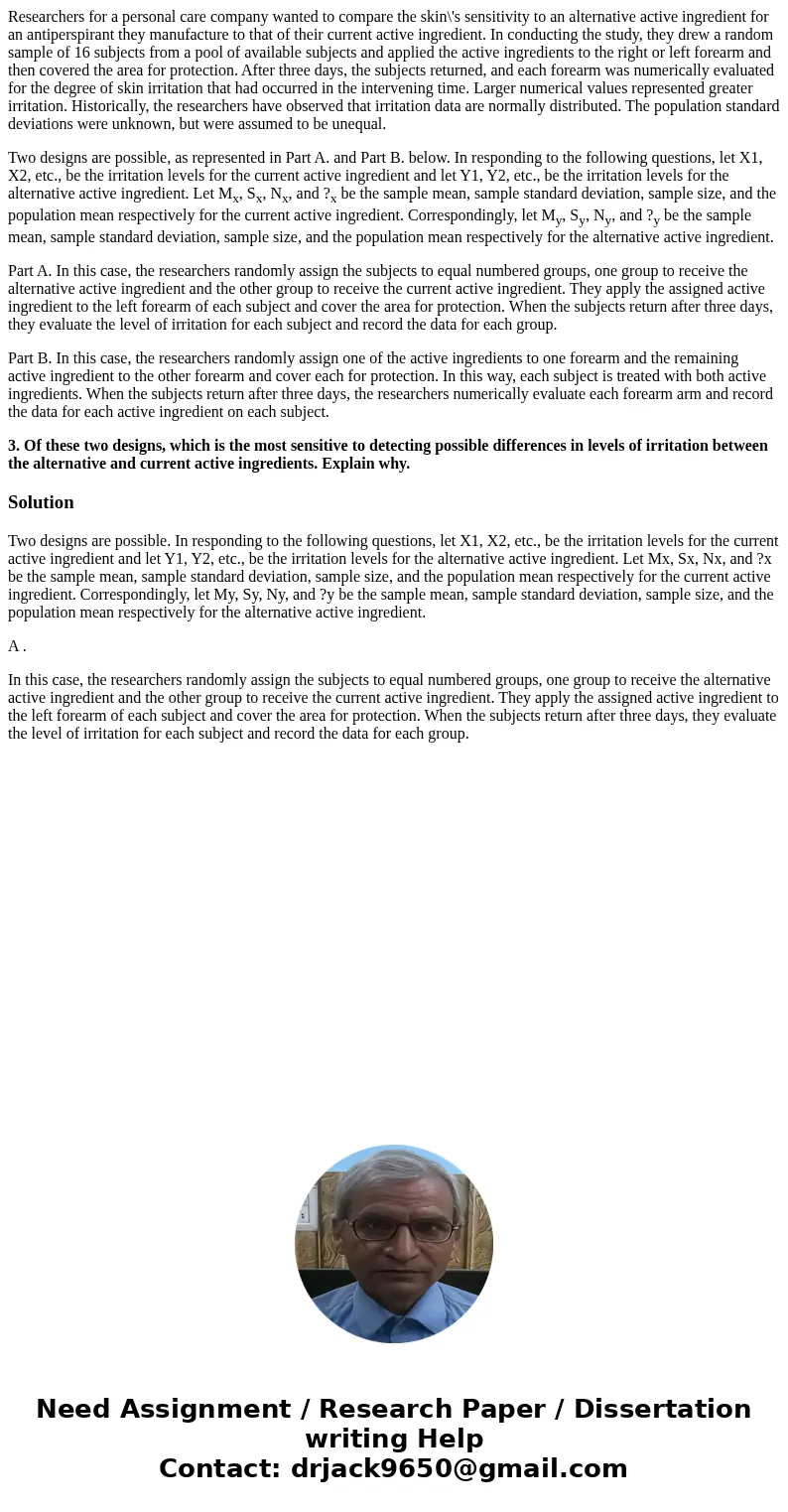Researchers for a personal care company wanted to compare th
Researchers for a personal care company wanted to compare the skin\'s sensitivity to an alternative active ingredient for an antiperspirant they manufacture to that of their current active ingredient. In conducting the study, they drew a random sample of 16 subjects from a pool of available subjects and applied the active ingredients to the right or left forearm and then covered the area for protection. After three days, the subjects returned, and each forearm was numerically evaluated for the degree of skin irritation that had occurred in the intervening time. Larger numerical values represented greater irritation. Historically, the researchers have observed that irritation data are normally distributed. The population standard deviations were unknown, but were assumed to be unequal.
Two designs are possible, as represented in Part A. and Part B. below. In responding to the following questions, let X1, X2, etc., be the irritation levels for the current active ingredient and let Y1, Y2, etc., be the irritation levels for the alternative active ingredient. Let Mx, Sx, Nx, and ?x be the sample mean, sample standard deviation, sample size, and the population mean respectively for the current active ingredient. Correspondingly, let My, Sy, Ny, and ?y be the sample mean, sample standard deviation, sample size, and the population mean respectively for the alternative active ingredient.
Part A. In this case, the researchers randomly assign the subjects to equal numbered groups, one group to receive the alternative active ingredient and the other group to receive the current active ingredient. They apply the assigned active ingredient to the left forearm of each subject and cover the area for protection. When the subjects return after three days, they evaluate the level of irritation for each subject and record the data for each group.
Part B. In this case, the researchers randomly assign one of the active ingredients to one forearm and the remaining active ingredient to the other forearm and cover each for protection. In this way, each subject is treated with both active ingredients. When the subjects return after three days, the researchers numerically evaluate each forearm arm and record the data for each active ingredient on each subject.
3. Of these two designs, which is the most sensitive to detecting possible differences in levels of irritation between the alternative and current active ingredients. Explain why.
Solution
Two designs are possible. In responding to the following questions, let X1, X2, etc., be the irritation levels for the current active ingredient and let Y1, Y2, etc., be the irritation levels for the alternative active ingredient. Let Mx, Sx, Nx, and ?x be the sample mean, sample standard deviation, sample size, and the population mean respectively for the current active ingredient. Correspondingly, let My, Sy, Ny, and ?y be the sample mean, sample standard deviation, sample size, and the population mean respectively for the alternative active ingredient.
A .
In this case, the researchers randomly assign the subjects to equal numbered groups, one group to receive the alternative active ingredient and the other group to receive the current active ingredient. They apply the assigned active ingredient to the left forearm of each subject and cover the area for protection. When the subjects return after three days, they evaluate the level of irritation for each subject and record the data for each group.

 Homework Sourse
Homework Sourse